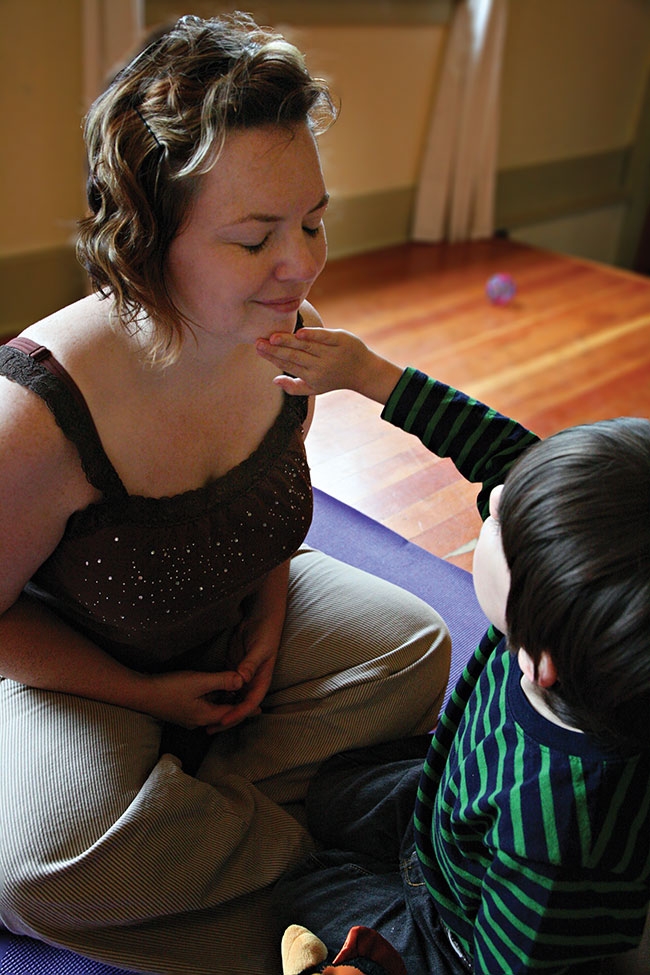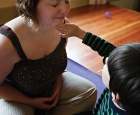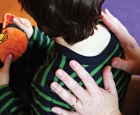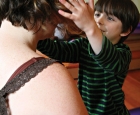
Features
Patient Care
Practice
Safe space: Massage therapy for children with Autism Spectrum Disorder
According to the Public Health Agency of Canada, one in 66 children in Canada is diagnosed with Autism Spectrum Disorder (ASD).
April 10, 2019 By Helen Lammers-Helps
 Since children may not make eye contact or respond with a verbal “yes Massage therapy benefits children with autism
Since children may not make eye contact or respond with a verbal “yes Massage therapy benefits children with autismA complex developmental disorder, ASD symptoms appear early in childhood and affect a child’s ability to communicate and interact socially. According to the Autism Research Institute, ASD is defined by a specific set of behaviours such as delayed language, difficulty with social interaction, and repetitive patterns of behaviour that affect children to various degrees.
While there is currently no known cure for autism, children with ASD are seeing some improvement from specially-trained massage therapists, says Tina Allen, author of the best-selling book, A Modern Day Guide to Massage for Children.
Allen is also the Founder and Director of the Liddle Kidz Foundation, a global training institute for pediatric massage therapy. She says research has demonstrated the benefits of massage for children on the spectrum. Sleep disturbances are often significant for children with an Autism Spectrum Disorder, says Allen. These can include refusal to go to bed, getting out of bed, tantrums at bedtime, early waking, requiring a parent to sleep with the child, and hyperactivity at night. In one study that introduced the use of touch to several families, the researchers reported that the parents found that sleep patterns had improved, that the children were more relaxed after massage, and that they appeared to be more open to touch.
“Nurturing touch has also been found to be beneficial in reducing inattentiveness, touch aversion and withdrawal and can have lifelong benefits,” says Allen. “All children require nurturing touch to thrive, and for those on the autism spectrum, with specialized touch therapy, we can offer these children specific and comprehensive care.”
Although it is commonly reported that children with autism are opposed to physical touch, it is interesting to note that many parents as well as massage therapists, are finding great success in the use of massage therapy, says Allen.
Training is necessary in order to provide quality care for this special population. Allen teaches a course for massage therapists and health care professionals called “Touch Therapy for Liddle Kidz with Autism.” In the program, participants learn about autism and ASD, common ASD symptoms, pediatric massage techniques and methodology, adaptations utilizing tactile introduction, sensory stimulation and integration, and the importance of communication and attachment in building healthy relationships.
Pediatric massage techniques for treating children with varied physical, developmental, and emotional difficulties are demonstrated and practised during hands-on sessions. The benefits and importance of individualized adaptations are emphasized.
Allen explains some of the ways in which the approach for providing massage therapy for a child with ASD varies from a neurotypical child. Each child with an Autism Spectrum Disorder will have his or her own individual symptoms and behaviours. As a result, it’s important to be prepared to take your time and proceed slowly.
“The child must feel safe and a respectful connection takes time. There is a high probability you will not introduce massage at your first session,” says Allen. At the beginning, sessions may last only a few minutes. In time, children become accustomed to receiving touch therapy so sessions will begin to last longer.
In addition to parental permission, Allen says practitioners should be getting the child’s permission. Since children may not make eye-to-eye contact or respond with a verbal “yes,” establishing non-verbal communication and using slow transitions are important. “Therapists should move cautiously and respect the child’s cues,” she says. “Take time to recognize the child’s likes and dislikes associated with different kinds of textures, sensory considerations and types of lubricants.”
The therapist should find out what forms of communication are being used, such as sign language, picture boards, spoken and written language.
Massage therapists should never insist that a child participate in a massage session, insists Allen.
Allen offers some other tips to massage therapists working with a child with ASD:
- Speak with a calm and loving voice.
- Ask a parent or caregiver to supply a favourite toy or blanket to increase the child’s engagement level.
- Start with gentle touch and gradually increase pressure while being aware of the verbal and non-verbal cues from the child. “Consider applying touch over cloth or clothing and beginning with hands and feet which may be more comfortable.”
- Teaching parents simple techniques that they can use with their child at home between sessions can also be helpful.
Winnipeg-based Erica Lo has been a massage therapist for more than 16 years, and received training in pediatric massage through Allen at the Liddle Kidz Foundation. She has focused on pediatric and pre-natal populations for the past seven years. She says the education and hands-on training really helped prepare her for a career working with children.
“I’ve learned that treating children with autism takes a lot of patience,” says Lo. Children with an aversion to touch take time to get comfortable, so Lo takes it slow and gently introduces touch through play.
“It’s important to have the parent present and involved,” says Lo. “Every child has different boundaries and
it’s important as a therapist to learn these with the help of the parent or caregiver,” she says. Lo also frequently demonstrates how to provide nurturing touch on a demo doll so the parents can administer it in the comfort of their home.
Lo has witnessed the benefits of pediatric massage on children. “I’ve seen children go from not wanting to be touched, to slowly accepting it, to wanting to be massaged and then showing a calmness after sessions,” she says.
Parents have also told her how much better their child slept and the greater bond they were able to create through massage, says Lo.
Ottawa-area massage therapist Shelley Schroeder agrees that taking extra training is essential for working with children with ASD. “I can say I would not have been prepared sufficiently with just my RMT education.”
The mom of a seven-year old son who is on the spectrum, Schroeder has also taken training in pediatric massage through the Liddle Kidz Foundation.
Knowing the uniqueness of each child, Schroeder says she works with the family to develop goals and a treatment plan. “For some, managing the effects of toe walking is a priority, for others it can be learning to let their bodies relax, or developing a tolerance to touch.”
Always keep in mind that children with autism don’t experience the world the same as others might,” says Schroeder. “Your sheets might feel too scratchy, your music may be too loud, your oil might smell bad. These are all valid things because this is how they perceive them.”
Schroeder has some advice for massage therapists interested in working with children with ASD:
“The world of pediatrics is so much bigger than I imagined,” she says. She recommends starting with additional training on pediatrics in general. “Once you become accustomed to typical kids, then take reputable courses to prepare you to work with this and other atypical populations.”
HELEN LAMMERS-HELPS has more than 20 years’ experience writing about diverse subjects including business, environment, sustainability, food, gardening, and agriculture for a variety of publications and websites. She is a member of the Professional Writers Association of Canada
Print this page


